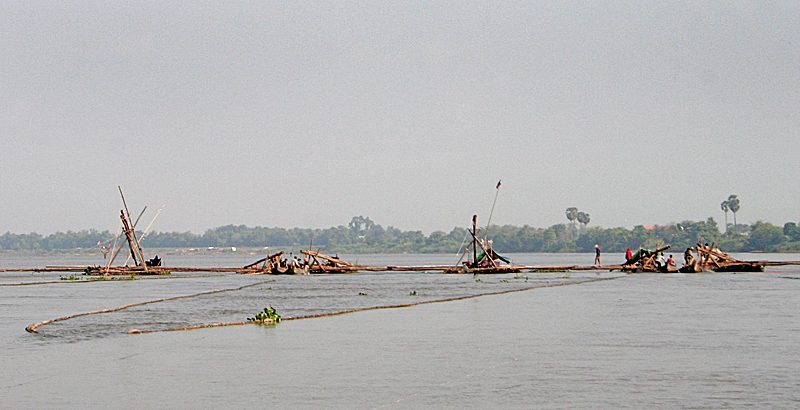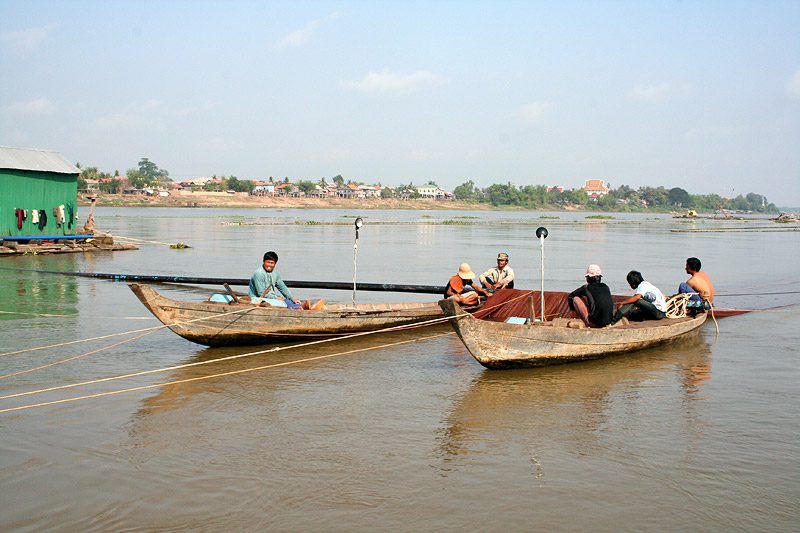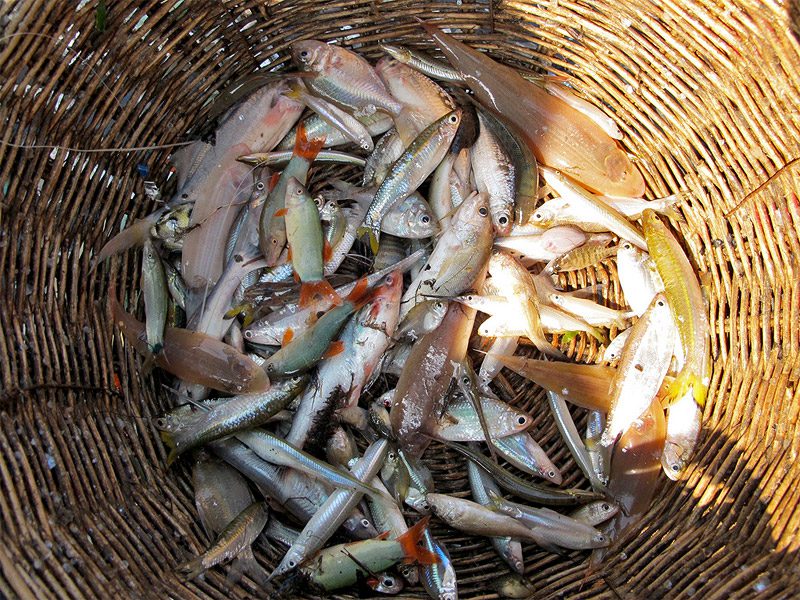Wednesday March 14, 2012
The Tonle Sap Lake of Cambodia is one of a handful of water bodies where you can catch such an impressive variety of freshwater fish. Southeast Asia’s largest lake is one of the most productive freshwater ecosystems of the world, which makes it an ideal location for researchers to collect fish specimens. The lake is a natural floodplain and during the wet season the inundated area expands to over five times the usual dry season size. As rains swell the Mekong River, it rises and reverses the flow of the Tonle Sap River to fill the lake; then during the dry season, the lake drains through the Tonle Sap River back in to the Mekong River.
Each year, as the lake drains back into the Mekong, the Dai fishery commences, operating from October to March with a marked peak in January. The Dai net fishery consists of a bag net suspended between scaffolding formed from tree trunks. The Dai nets are positioned near the outflow of the lake and in the Tonle Sap River to catch fish as they migrate down river. The fish captured are generally small in size, but are harvested in abundance. Fishers in the Tonle Sap system catch 230,000 tons a year (Baran et al 2001). The video above was taken in February, when the hourly catch has already begun to drop considerably, however the fish diversity is still impressive.



